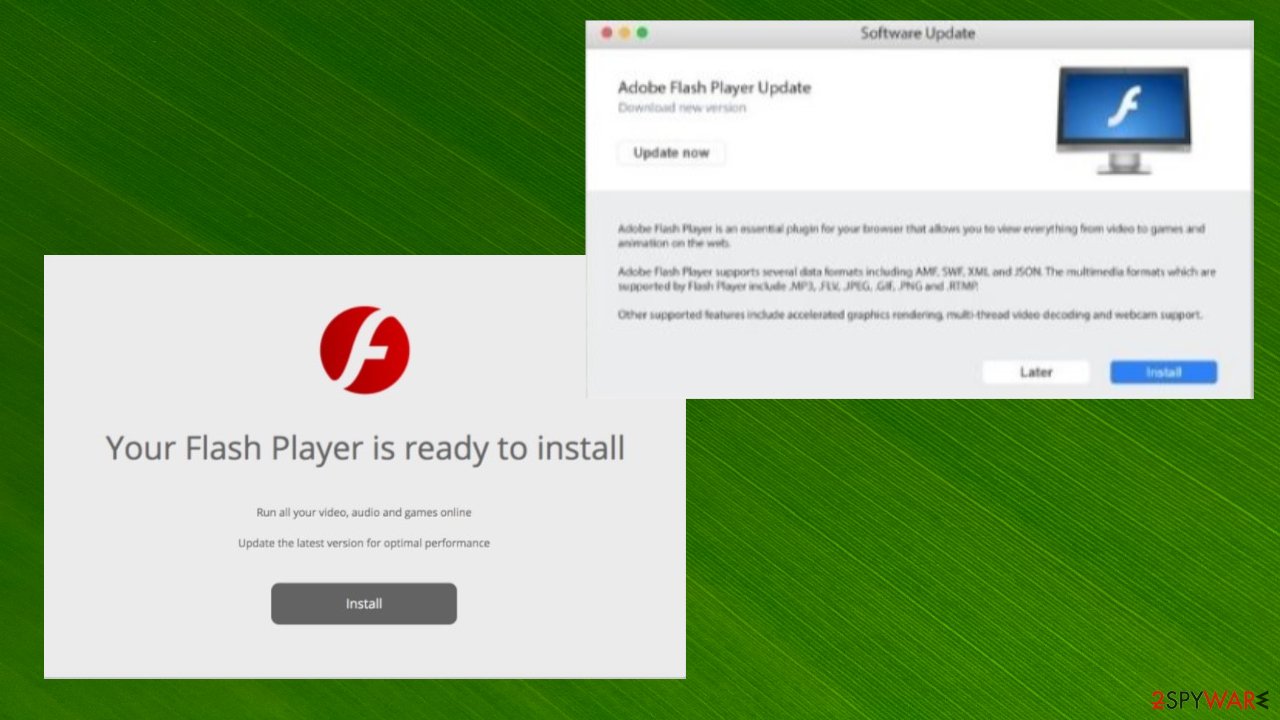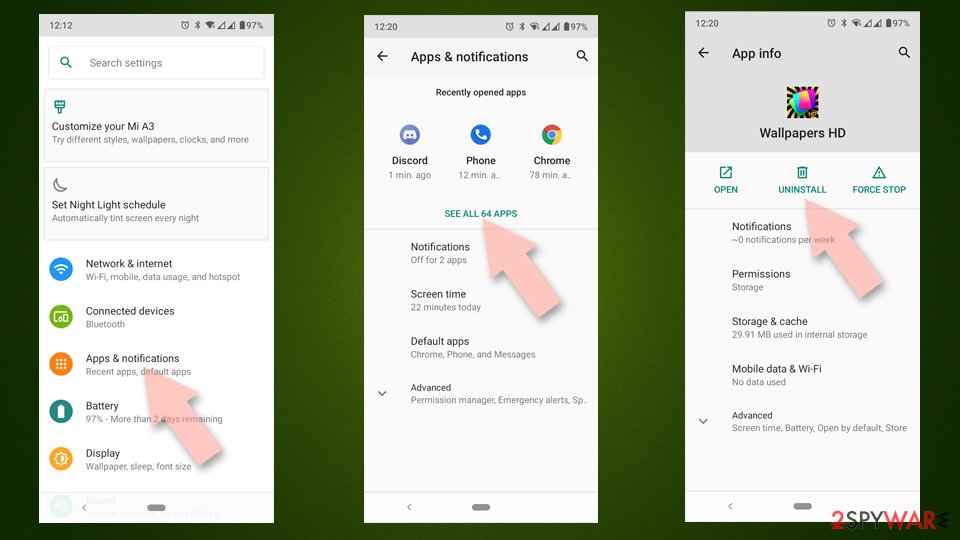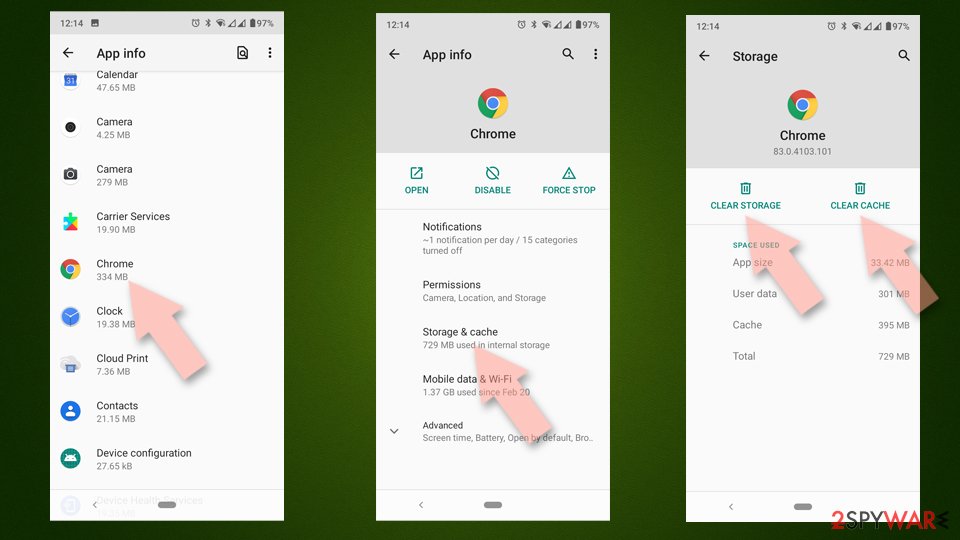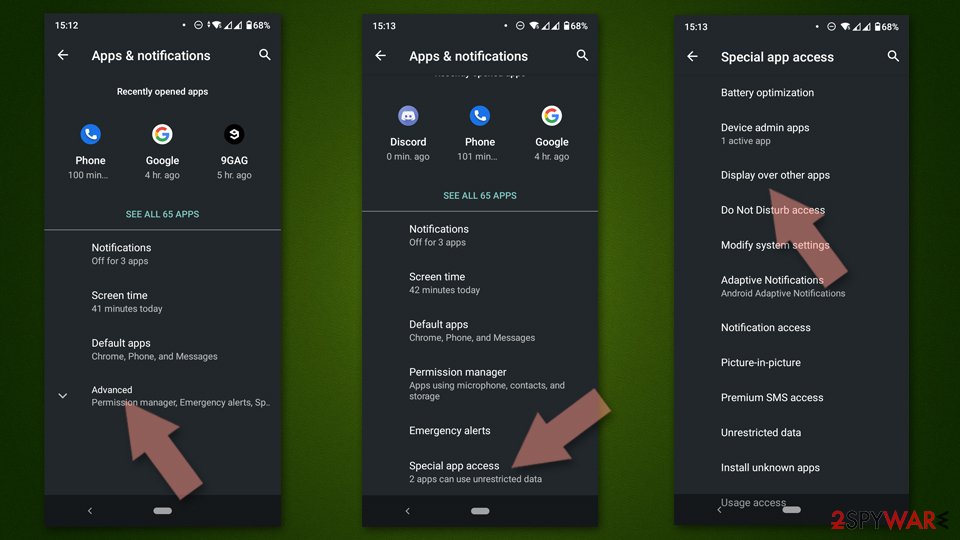Myknowing.biz (Virus Removal Guide) - Chrome, Firefox, IE, Edge
Myknowing.biz Removal Guide
What is Myknowing.biz?
Myknowing.biz – a treacherous website that seeks to deliver you deceptive ads as notifications

Myknowing.biz is yet another website that forces its notifications on users. It does that by stating that they need to press Allow button to either continue to the site, prove that they're not robots, confirm that they're over 18 years old, and misleading prompts alike. They might differ depending on your geolocation. If you end up on this dubious website, please close it immediately.
Users who have accepted Myknowing.biz notifications have reported that ads started to pop-up directly on their devices' screens. That's one of the main goals of this shady website – show ads in the form of notifications, thus generating traffic to affiliated websites.
You could end up on Myknowing.biz in four ways, by entering the address manually, by mistyping a URL, by clicking on deceptive ads, or if you have adware or other potentially unwanted program installed on your device. We'll explain how to eliminate the annoying ads and redirects and get your device back on its feet.
| name | Myknowing.biz |
|---|---|
| Type | Adware, PUP, redirect virus |
| IP address | 52.86.219.129 |
| Purpose | Earn revenue by redirecting people to affiliated sites |
| Symptoms | Ads appearing directly on the screen, sudden redirects to questionable portals, slower device, and internet connection |
| Risks | Infections with additional PUPs or malware, which would result in financial losses, privacy issues |
| distribution | Software bundles, deceptive ads, fake Flash Player updates |
| Removal | Eliminate this cyber threat by scanning your infected device with a compatible and trustworthy security tool |
| System health fix | To restore any changes that the infection has made to your system files and clean tracking cookies in the process, use the all-in-one FortectIntego system repair software |
When you accept push notifications from legitimate sources, like your favorite web store or news website, you get the latest updates immediately. But when you accept Myknowing.biz virus, instead of news or anything useful, all you will receive is a bunch of deceptive ads.
As stated before, Myknowing.biz ads are shown in the form of notifications. During our research, the “X” button in the right-upper corner of displayed ads didn't close the ad. It either didn't work or opened a new browser tab with an affiliated website.
That's just one of the tricks that the developers of Myknowing.biz are using. The other one is called sudden redirects. These can be triggered on-demand and can launch your browser and open a new tab with any of its sponsored sites. Thus you might be forced to visit portals with:
- porn,
- malware,
- PUPs,
- push notification viruses,
- gambling,
- tech support scams, etc.
Some of the sites that Myknowing.biz redirect promotes could be harmless, but some may have ill intentions. They could try to draw out personal information, such as your SSN, credit card details, etc., lure you into gambling, infect your device with malware through drive-by downloads,[1] push to install PUPs, and so on.

Thus nor this website nor its notifications should be trusted. If you've accepted them, you can remove Myknowing.biz notifications by using our comprehensive tutorials listed at the bottom of the article. However, a scan with reliable and free AV tools such as SpyHunter 5Combo Cleaner and Malwarebytes is very highly recommended.
By performing a full system scan with said tools, you'll check if there are any PUPs or malware on your device. Furthermore, if you didn't type in Myknowing.biz manually, but it opened anyways, or if any other pages open out of the blue, that means you have to scan your device to eliminate adware.
Once Myknowing.biz removal is properly done, you have to take care of your system files and settings because various infections could make tons of modifications to them. Messy Registry could lead to abnormal system behavior. That's why IT experts[2] advise using the FortectIntego tool to fix system-related issues.
Deceptive ads and software bundles cause PUP installations
Potentially unwanted programs, such as browser hijackers, unwanted toolbars, adware, and others, can be delivered in a myriad of different ways. But our research suggests that most of them are spread through deceptive ads and software bundles.
The latter is usually downloaded from third-party software vendors. One research has revealed,[3] that 31 out of 50 top downloads on one of the most popular software vendor portals had PUPs in them. That's why people have to stay cautious when installing any new software.

You have to choose the Advanced, Custom modes and remove ticks from all apps preselected for installation. Install only the app you initially wanted. Another sure way to get a PUP or even worse is to believe deceptive ads, especially the ones claiming that you need to update your Flash Player.
Adobe discontinued their service for Flash Player and urged everyone to delete it for security purposes. Still, many people didn't hear the message. Therefore, cybercriminals are spreading their vile creations camouflaged as updates or installers. If you ever come by such misleading ads, please close the tab and never visit that page again.
Use our manuals to remove Myknowing.biz virus from your device and your browser easily
Macs, Androids, and Windows devices should be virus-free so that they could operate at the highest level. Infections such as Myknowing.biz virus could act as a bridge to more hazardous malware. That's why you should take action immediately if you spot any abnormal behavior from your device.
The best way to protect your device from all kinds of cyber infections is by acquiring and using a trustworthy anti-malware tool. Proper security software will remove Myknowing.biz, block suspicious pages, stop you from installing PUPs, prevent malware from infecting your system.
You will have to finish Myknowing.biz removal manually if you've accepted its notifications. To make things easier, we've posted detailed tutorials from all browsers below. Please don't forget to run system diagnostics to fix any system irregularities and delete tracking cookies automatically. And one last thing, please accept push notifications only from legit portals to avoid such perils in the future.
You may remove virus damage with a help of FortectIntego. SpyHunter 5Combo Cleaner and Malwarebytes are recommended to detect potentially unwanted programs and viruses with all their files and registry entries that are related to them.
Getting rid of Myknowing.biz. Follow these steps
Stop browser notifications
Remove unwanted notifications from Google Chrome (desktop):
- Open Google Chrome browser and go to Menu > Settings.
- Scroll down and click on Advanced.
- Locate Privacy and security section and pick Site Settings > Notifications.

- Look at the Allow section and look for a suspicious URL.
- Click the three vertical dots next to it and pick Block. This should remove unwanted notifications from Google Chrome.

Remove unwanted notifications from Google Chrome (Android):
- Open Google Chrome and tap on Settings (three vertical dots).
- Select Notifications.
- Scroll down to the Sites section.
- Locate the unwanted URL and toggle the button to the left (Off setting).

Remove unwanted notifications from Mozilla Firefox:
- Open Mozilla Firefox and go to Menu > Options.
- Click on Privacy & Security section.
- Under Permissions, you should be able to see Notifications. Click the Settings button next to it.

- In the Settings – Notification Permissions window, click on the drop-down menu by the URL in question.
- Select Block and then click on Save Changes. This should remove unwanted notifications from Mozilla Firefox.

Remove unwanted notifications from Safari:
- Click on Safari > Preferences…
- Go to the Websites tab and, under General, select Notifications.
- Select the web address in question, click the drop-down menu and select Deny.

Remove unwanted notifications from MS Edge:
- Open Microsoft Edge, and click the Settings and more button (three horizontal dots) at the top-right of the window.
- Select Settings and then go to Advanced.
- Under Website permissions, pick Manage permissions and select the URL in question.

- Toggle the switch to the left to turn notifications off on Microsoft Edge.

Remove unwanted notifications from MS Edge (Chromium):
- Open Microsoft Edge, and go to Settings.
- Select Site permissions.
- Go to Notifications on the right.
- Under Allow, you will find the unwanted entry.
- Click on More actions and select Block.

Remove unwanted notifications from Internet Explorer:
- Open Internet Explorer, and click on the Gear icon at the top-right of the window.
- Select Internet options and go to the Privacy tab.
- In the Pop-up Blocker section, click on Settings.
- Locate web address in question under Allowed sites and pick Remove.

Uninstall from Windows
Instructions for Windows 10/8 machines:
- Enter Control Panel into Windows search box and hit Enter or click on the search result.
- Under Programs, select Uninstall a program.

- From the list, find the entry of the suspicious program.
- Right-click on the application and select Uninstall.
- If User Account Control shows up, click Yes.
- Wait till uninstallation process is complete and click OK.

If you are Windows 7/XP user, proceed with the following instructions:
- Click on Windows Start > Control Panel located on the right pane (if you are Windows XP user, click on Add/Remove Programs).
- In Control Panel, select Programs > Uninstall a program.

- Pick the unwanted application by clicking on it once.
- At the top, click Uninstall/Change.
- In the confirmation prompt, pick Yes.
- Click OK once the removal process is finished.
Delete from macOS
Remove items from Applications folder:
- From the menu bar, select Go > Applications.
- In the Applications folder, look for all related entries.
- Click on the app and drag it to Trash (or right-click and pick Move to Trash)

To fully remove an unwanted app, you need to access Application Support, LaunchAgents, and LaunchDaemons folders and delete relevant files:
- Select Go > Go to Folder.
- Enter /Library/Application Support and click Go or press Enter.
- In the Application Support folder, look for any dubious entries and then delete them.
- Now enter /Library/LaunchAgents and /Library/LaunchDaemons folders the same way and terminate all the related .plist files.

Uninstall from Android
Uninstall unwanted programs from Android device:
- Go to Settings -> Apps/Applications.
- Expand the full list of the installed apps.
- Scroll through the list and tap on a suspicious application once.
- Tap on it and select Uninstall.

- Reboot the device.
Clear Storage and data files on Android from Google Chrome or other apps:
- Go to Settings > Apps/Applications.
- Expand the full list of the installed apps.
- Tap on Chrome and select Storage & cache.
- Clear storage and clear cache of the app.

If you are seeing ads on top of other apps but are not sure what is causing it, perform the following steps:
- Go to Apps/Applications.
- Tap Advanced.
- Select Special App access.
- Tap on Display over other apps.

- Eliminate apps with these access rights enabled.
Remove from Microsoft Edge
Delete unwanted extensions from MS Edge:
- Select Menu (three horizontal dots at the top-right of the browser window) and pick Extensions.
- From the list, pick the extension and click on the Gear icon.
- Click on Uninstall at the bottom.

Clear cookies and other browser data:
- Click on the Menu (three horizontal dots at the top-right of the browser window) and select Privacy & security.
- Under Clear browsing data, pick Choose what to clear.
- Select everything (apart from passwords, although you might want to include Media licenses as well, if applicable) and click on Clear.

Restore new tab and homepage settings:
- Click the menu icon and choose Settings.
- Then find On startup section.
- Click Disable if you found any suspicious domain.
Reset MS Edge if the above steps did not work:
- Press on Ctrl + Shift + Esc to open Task Manager.
- Click on More details arrow at the bottom of the window.
- Select Details tab.
- Now scroll down and locate every entry with Microsoft Edge name in it. Right-click on each of them and select End Task to stop MS Edge from running.

If this solution failed to help you, you need to use an advanced Edge reset method. Note that you need to backup your data before proceeding.
- Find the following folder on your computer: C:\\Users\\%username%\\AppData\\Local\\Packages\\Microsoft.MicrosoftEdge_8wekyb3d8bbwe.
- Press Ctrl + A on your keyboard to select all folders.
- Right-click on them and pick Delete

- Now right-click on the Start button and pick Windows PowerShell (Admin).
- When the new window opens, copy and paste the following command, and then press Enter:
Get-AppXPackage -AllUsers -Name Microsoft.MicrosoftEdge | Foreach {Add-AppxPackage -DisableDevelopmentMode -Register “$($_.InstallLocation)\\AppXManifest.xml” -Verbose

Instructions for Chromium-based Edge
Delete extensions from MS Edge (Chromium):
- Open Edge and click select Settings > Extensions.
- Delete unwanted extensions by clicking Remove.

Clear cache and site data:
- Click on Menu and go to Settings.
- Select Privacy, search and services.
- Under Clear browsing data, pick Choose what to clear.
- Under Time range, pick All time.
- Select Clear now.

Reset Chromium-based MS Edge:
- Click on Menu and select Settings.
- On the left side, pick Reset settings.
- Select Restore settings to their default values.
- Confirm with Reset.

Remove from Mozilla Firefox (FF)
Remove dangerous extensions:
- Open Mozilla Firefox browser and click on the Menu (three horizontal lines at the top-right of the window).
- Select Add-ons.
- In here, select unwanted plugin and click Remove.

Reset the homepage:
- Click three horizontal lines at the top right corner to open the menu.
- Choose Options.
- Under Home options, enter your preferred site that will open every time you newly open the Mozilla Firefox.
Clear cookies and site data:
- Click Menu and pick Settings.
- Go to Privacy & Security section.
- Scroll down to locate Cookies and Site Data.
- Click on Clear Data…
- Select Cookies and Site Data, as well as Cached Web Content and press Clear.

Reset Mozilla Firefox
If clearing the browser as explained above did not help, reset Mozilla Firefox:
- Open Mozilla Firefox browser and click the Menu.
- Go to Help and then choose Troubleshooting Information.

- Under Give Firefox a tune up section, click on Refresh Firefox…
- Once the pop-up shows up, confirm the action by pressing on Refresh Firefox.

Remove from Google Chrome
Delete malicious extensions from Google Chrome:
- Open Google Chrome, click on the Menu (three vertical dots at the top-right corner) and select More tools > Extensions.
- In the newly opened window, you will see all the installed extensions. Uninstall all the suspicious plugins that might be related to the unwanted program by clicking Remove.

Clear cache and web data from Chrome:
- Click on Menu and pick Settings.
- Under Privacy and security, select Clear browsing data.
- Select Browsing history, Cookies and other site data, as well as Cached images and files.
- Click Clear data.

Change your homepage:
- Click menu and choose Settings.
- Look for a suspicious site in the On startup section.
- Click on Open a specific or set of pages and click on three dots to find the Remove option.
Reset Google Chrome:
If the previous methods did not help you, reset Google Chrome to eliminate all the unwanted components:
- Click on Menu and select Settings.
- In the Settings, scroll down and click Advanced.
- Scroll down and locate Reset and clean up section.
- Now click Restore settings to their original defaults.
- Confirm with Reset settings.

Delete from Safari
Remove unwanted extensions from Safari:
- Click Safari > Preferences…
- In the new window, pick Extensions.
- Select the unwanted extension and select Uninstall.

Clear cookies and other website data from Safari:
- Click Safari > Clear History…
- From the drop-down menu under Clear, pick all history.
- Confirm with Clear History.

Reset Safari if the above-mentioned steps did not help you:
- Click Safari > Preferences…
- Go to Advanced tab.
- Tick the Show Develop menu in menu bar.
- From the menu bar, click Develop, and then select Empty Caches.

After uninstalling this potentially unwanted program (PUP) and fixing each of your web browsers, we recommend you to scan your PC system with a reputable anti-spyware. This will help you to get rid of Myknowing.biz registry traces and will also identify related parasites or possible malware infections on your computer. For that you can use our top-rated malware remover: FortectIntego, SpyHunter 5Combo Cleaner or Malwarebytes.
How to prevent from getting adware
Do not let government spy on you
The government has many issues in regards to tracking users' data and spying on citizens, so you should take this into consideration and learn more about shady information gathering practices. Avoid any unwanted government tracking or spying by going totally anonymous on the internet.
You can choose a different location when you go online and access any material you want without particular content restrictions. You can easily enjoy internet connection without any risks of being hacked by using Private Internet Access VPN.
Control the information that can be accessed by government any other unwanted party and surf online without being spied on. Even if you are not involved in illegal activities or trust your selection of services, platforms, be suspicious for your own security and take precautionary measures by using the VPN service.
Backup files for the later use, in case of the malware attack
Computer users can suffer from data losses due to cyber infections or their own faulty doings. Ransomware can encrypt and hold files hostage, while unforeseen power cuts might cause a loss of important documents. If you have proper up-to-date backups, you can easily recover after such an incident and get back to work. It is also equally important to update backups on a regular basis so that the newest information remains intact – you can set this process to be performed automatically.
When you have the previous version of every important document or project you can avoid frustration and breakdowns. It comes in handy when malware strikes out of nowhere. Use Data Recovery Pro for the data restoration process.
- ^ Drive-by download. Wikipedia. The free encyclopedia.
- ^ Odstranitvirus. Odstranitvirus. Spyware news and security.
- ^ Slade. 62% of the Top 50 Download.com applications bundle toolbars and other PUPs. Emsisoft. Security blog.
